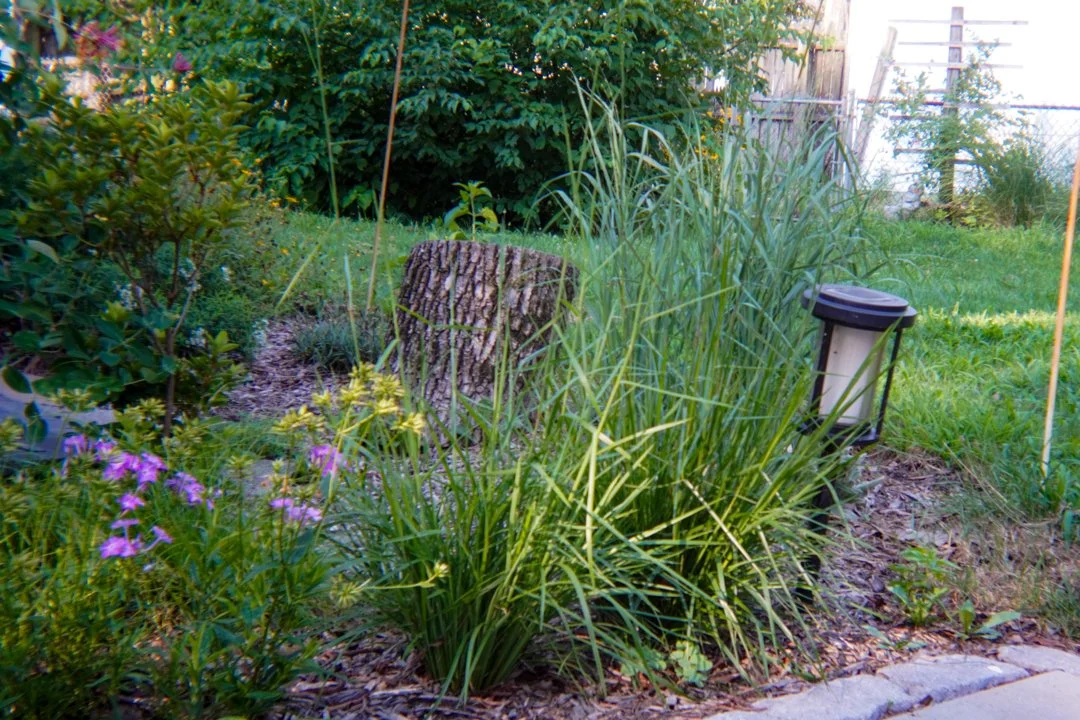On Native Ornamental Grasses (And What They Can Do For Your Garden)
When most people think of a beautiful garden, they think of flowers. And fair enough—blooms bring drama, color, fragrance, and pollinators. But when I walk through a space, my eye always finds its way to the grasses. Moving with the breeze, catching light, providing structure and texture—native grasses are a foundational layer in garden design that too often gets overlooked.
I love them because they do more than just fill space. They ground a garden in its local ecology, offer seasonal interest well into winter, and provide critical habitat for wildlife. Grasses bring mood and movement to a space in a way no other plant group really can. And, perhaps most importantly, they’re resilient.
Texture and Movement
Grasses are the rhythm section of the garden. They don’t usually steal the spotlight, but they tie everything together. Their texture and form decorate a space with brush-stroke like consistency, and their shifting tones mark the passage of seasons. From the blue-green blades of Schizachyrium scoparium (little bluestem) to the fine wisps of Carex pensylvanica, grasses offer a rich visual palette.
Where blooms add pops of color, grasses add delicate motion. On windy days, the whole garden becomes kinetic. That kind of visual energy does something special—it draws you in. And because native grasses tend to grow in clumps or loose tufts, they help define spaces without creating walls. You can see through them, walk around them, let them guide your eye.
To see a gust of wind carry over a grass-heavy garden is like standing oceanside. A glimmer sliding across a sunlit field, and then everything settling down as if nothing ever happened.
Ecological Function
Native grasses are workhorses in any ecologically-minded planting. Their deep root systems stabilize soil, reduce erosion, and increase infiltration, making them ideal for slopes or rain gardens. These roots also contribute to soil health by building organic matter and creating habitat for beneficial microbes.
Above ground, they offer cover for birds and small mammals, especially in winter when food and shelter are scarce. Many grass species also serve as host plants for butterfly and moth larvae, including skippers, an important group of pollinators.
When left standing through winter, grasses provide not just shelter but also visual interest—frosted seed heads, copper-colored blades, the crisp rustle of dried foliage. This "let it be" approach is good for the garden and good for the gardener.
Design Versatility
Whether you’re building a formal layout or a loose, meadowy scheme, there’s a native grass that will fit. Here are a few ways I like to use them:
Matrix planting: Grasses like Carex pensylvanica or Eragrostis spectabilis can serve as the base layer in a planting matrix. They fill space between showier perennials, suppress weeds, and tie the design together.
Accent plants: Taller species like Andropogon gerardii (big bluestem) or Panicum virgatum (switchgrass) can anchor a bed or provide a soft backdrop.
Edges and transitions: Use low-growing sedges or bunchgrasses along paths and bed edges to soften hard lines.
Seasonal focal points: Some grasses shine at specific times of year. Sporobolus heterolepis (prairie dropseed) turns golden in fall, whereas .
Grasses also make a garden feel bigger. Their fine texture and transparency create the illusion of depth and space, especially when layered thoughtfully. One popular concept in when designing for large, flat spaces that need to maintain a tidy look (think a 100’ x 100’ greenspace in a corporate park) is to use a low-growing (12”-24”) species as a groundcover/matrix to maintain a clear sightline across the entire space. For most of the Eastern/Midwestern US, Sporobolus heterolepis is a great choice as a matrix plant for this purpose. The matrix can then be punctuated with clusters and drifts of flowering perennials at about the same height for seasonal interest.
Maintenance and Resilience
Unlike many ornamental grasses sold at nurseries, native species are adapted to local conditions and require less intervention. Once established, they often don’t need supplemental water, fertilizer, or pesticide treatments. They handle heat, drought, and poor soils with grace.
They also recover beautifully from seasonal cleanup. A simple cut-back in late winter or early spring is usually all that’s needed. Many will even self-sow gently, helping to knit a garden together over time.
One of my favorite things about grasses is how forgiving they are. If you plant them a little off or the design needs tweaking, they’re easy to move or edit. They play well with others, and they age beautifully.
Final Thoughts
Grasses are the quiet powerhouses of native garden design. They blur the line between ornamental and functional, aesthetic and ecological. They ask for little and give a lot.
In a garden culture that often prioritizes instant gratification, grasses invite us to think long-term. To appreciate subtlety. To find beauty in movement, in texture, in change.
So next time you’re planning a bed or refreshing your yard, ask yourself: what would this look like with a little more grass?


